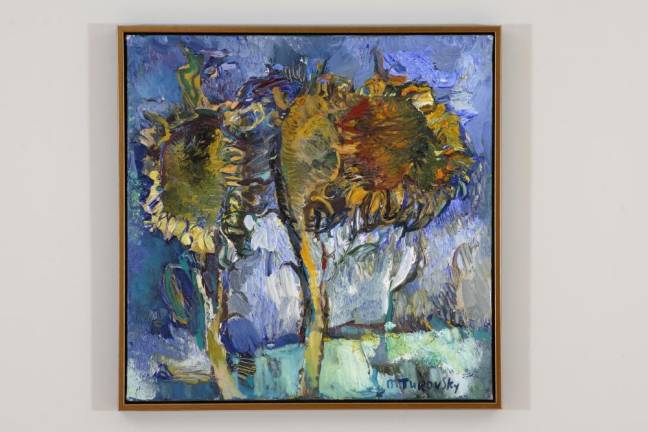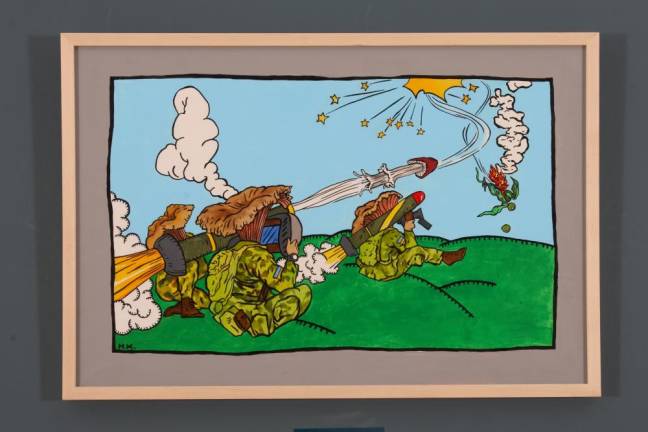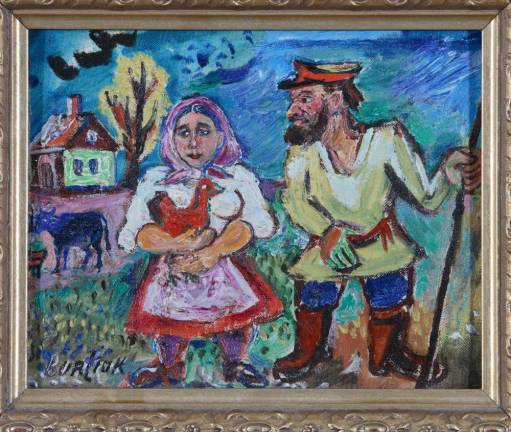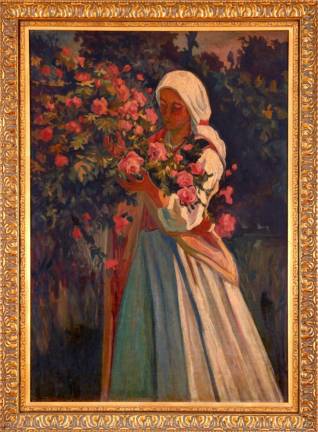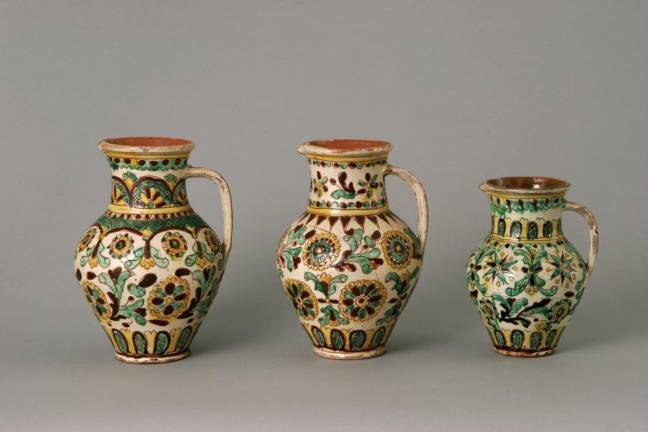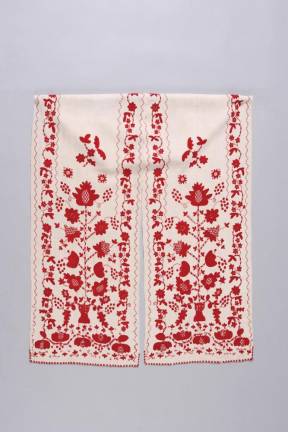The Ukrainian Museum
Add this downtown cultural oasis to your checklist, for the art, the history, the traditions and reaction to the war
“#Stand with Ukraine!” “Save Ukraine” read two paper signs at the entrance to the Ukrainian Museum, located in the East Village’s “Little Ukraine,” on the south side of 6th Street, between Cooper Square and Second Avenue.
Founded just a few blocks away in 1976 by the Ukrainian National Women’s League of America, it’s headquartered today in a gleaming modern facility with galleries for exhibits and film screenings, a classroom for educational programs and a gift shop.
It’s one of the city’s many small-scale cultural oases, nestled beside walk-ups and around the corner from McSorley’s. Claiming to be the largest museum of its kind in the U.S., the institution is a showcase for fine art, folk art and archival material, with exhibits today that champion the country’s rich artistic heritage while also addressing the ongoing pandemic and a raging war with Russia.
On a recent visit, the first-floor offered several handsome displays, including a joyous tribute to the highly decorative “pysanky,” Ukrainian Easter eggs, and a more somber, but colorful, response to COVID-19 by Christina Saj, a New Jersey artist of Ukrainian descent who painted flowers, ferns and doves on vinyl records during lockdown for a series titled “Finding Sanctuary During the Pandemic.” The disks line a wall in the lobby and an adjacent gallery to dramatic effect, and will be on view until roughly the end of April.
“The circular forms ... evoke mandalas, which can be used to facilitate meditation and provide sacred space,“ Saj writes in a statement about the installation. “In recent months, the world has literally been on fire, and, yet, amid all the chaos, there is beauty, there is art.”
Uncertain Times
Beauty fills these rooms. An ode to spring and a balm in these uncertain times, “In Bloom: Nature and Art” fills the main galleries on the first floor and explores the floral motif in Ukrainian paintings, costumes, ceramics and textiles, such as kilims, “rushnyky” (ritual cloths) and embroidered shirts for men and women.
The sunflower — a symbol of Ukraine and now a symbol of peace and resistance to Russia’s invaders — bursts forth in two thickly painted oils by Mikhail Turovsky, “Sunflower Suite 17” and “Sunflower Suite 24” (both undated) and in a framed kilim by Alla Leshko, “Sunflowers” (undated).
Turovsky, who currently resides in New York, was born in 1933 in Kyiv, in Soviet Ukraine. In 2019, he was the subject of a retrospective at the museum, “From Darkness to Light,” which featured his works about trauma, specifically the Holodomor (a famine in Soviet Ukraine from 1932-33) and the Holocaust, among others.
A story in the Ukrainian Daily at the time hailed his “graphic expressions in feverish color and dense, bold brushstrokes as seen in his paintings of sunflowers [and] textural cityscapes of his adopted home...”
Response to the Invasion
Ukraine’s present tragedy is addressed on the second floor, where the brilliantly colored “War of the Mushrooms,” nine illustrations by Crimean-born artist Nikita Kravtsov, debuted earlier this month in direct response to the invasion. (His works precede a much larger display of Ukrainian art and costume design, “The Impact of Modernity: Late 19th and Early 20th century Ukrainian Art,” featuring Sonia Delaunay, Alexander Archipenko and dozens more.)
Kravtsov’s graphic series is a cutting, contemporary take on a classic, eponymous Slavic folktale, with Russian aggressors — lampooned as “King Pea’s evil troops” — and Ukrainian patriots — styled “courageous mushrooms” — locked in fierce battle.
The pieces, acrylic on paper, evoke animation artwork. Mushroom-capped soldiers in camouflage blast away at King Pea’s menacing aircraft in one scene; 13 mushrooms decamped on a tiny island stand their ground against a floating peapod, commanded by a bloated pea, in another.
Art mirrors life. “Russian warship, go f... yourself ... the whole world now repeats this phrase as a spell against evil,” the caption for the latter defiantly reads.
In a press release, the museum states: “The creative pictures drawn by Kravtsov in pencil and painted in vivid colors should not be misunderstood as simple cartoons and illustrations one finds in comic books. The subject matter is serious and representative of the massive assault by Russia on Ukraine and Ukrainian culture. Kravtsov reacts to the unwarranted war and the destruction levied on his homeland in his own inimitable style.”
Attendance at the museum has spiked since the invasion on February 24. Director Maria Shust estimates that it has risen by about 40%.
Look out for an upcoming show of works by Ukrainian photojournalist and videographer Maksim Levin, who was killed in a village outside Kyiv while covering the war for a Ukrainian news site. He went missing in mid-March.
A father of four and contributor to Reuters since 2013, among other outlets, he was only 40 years old. “He was shot twice. They found his body at the beginning of April. He was unarmed and wearing a press badge,” Shust told us.
The museum is now in the process of collecting photos from his wife. The show is expected to open around mid-May.
The Ukrainian Museum, 222 East 6th Street (between Cooper Square and Second Avenue). http://www.ukrainianmuseum.org/
